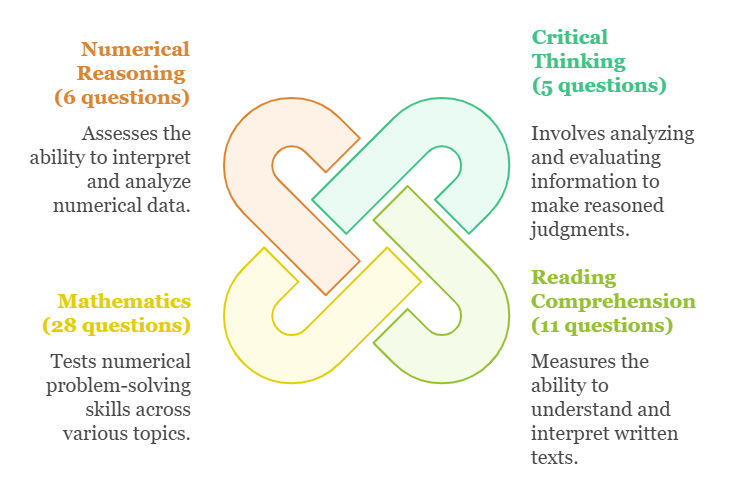Preparing for the Bocconi Admissions Test can feel overwhelming, especially if you’re unsure about the structure of the exam. Knowing what to expect and how the test is organized can make all the difference. Let’s break down the Bocconi Test structure so you can approach it clearly and confidently.
What is the Bocconi Admissions Test?
The Bocconi Admissions Test is specifically designed for students applying to Bocconi University, one of Europe’s leading business, law, and economics schools. Unlike standardized tests like the SAT or ACT, the Bocconi Test focuses on skills that reflect the university’s academic standards.
The test evaluates three primary skills:
- Critical thinking: Your ability to analyze patterns and solve problems.
- Mathematics: Your proficiency in mathematics and data interpretation.
- Reading comprehension: Your skill in understanding and interpreting written material.
This isn’t a test of rote memorization. Instead, it assesses critical thinking and problem-solving abilities, which are essential for student success at Bocconi.
Breaking Down the Bocconi Test Structure
The test is organized into three main content types, each targeting specific abilities.
But keep in mind…
All of the content types are mixed on the test. So, you could have a reading comprehension question, then a math question, then a critical thinking question.

1. Critical Thinking (5 questions)
Critical thinking questions challenge your ability to identify patterns, analyze relationships, and draw conclusions. Examples include:
- Solving table questions using logical deductions.
- Identifying relationships between ideas or concepts with logical propositions.
- Deciding which statements are true, false, or not given based on a short reading passage.
This section demands sharp thinking under time pressure. Success requires not only logic but also speed.
2. Mathematics and Numerical Reasoning (28 + 6 questions)
This content type assesses your understanding of basic mathematical principles and your ability to interpret data. You’ll encounter topics like:
- Algebra and solving equations.
- Geometry, including shapes and analytical geometry (especially linear equations).
- Data analysis and statistics.
- Tables and graphs interpretation.
While advanced math (like calculus) isn’t required, you’ll need a firm grasp of high school-level concepts. Time management is crucial since solving quickly and accurately can give you an edge.
3. Reading Comprehension (11 questions)
In this content type, you’ll analyze passages and answer questions about their content. Tasks include:
- Identifying the main idea of a passage.
- Evaluating arguments and the author’s intent.
- Understanding relationships between different parts of the text.
Strong reading and analytical skills are vital here, as the questions often require deep understanding within a limited time.
Key Features of the Bocconi Test Structure
The Bocconi Admissions Test has several distinct characteristics:
- Paced Timing: The test is designed to be fast-paced, challenging your ability to work efficiently. You have 75 minutes to answer 50 questions, so only 1.5 minutes per question, so only 1.5 minutes per question.
- Accuracy Over Guessing: Incorrect answers carry penalties (-0.2 per wrong answer, sometimes -0.33), so it’s better to skip questions you are completely uncertain about than guess.
- English Proficiency: Since the test is conducted in English, strong language skills are a must for international students.
Understanding these features can help you tailor your preparation strategy.
How to Prepare for the Bocconi Test
Preparation is the key to success. We wrote a massive article about it here: How to Prepare for the Bocconi Test.
Here’s a quick approach to each content type:
Critical Thinking
- Solve logic puzzles regularly. Here’s a site we love.
- Read the data but not the propositions for critical thinking table questions.
- Use mock tests to simulate actual exam conditions.
Mathematics and Numerical Reasoning
- Review foundational topics like algebra and geometry. We have links to free worksheets here.
- Practice interpreting charts, graphs, and data sets.
- Focus on solving problems quickly without sacrificing accuracy.
Reading Comprehension
- Read challenging texts, such as editorials or academic articles.
- Practice summarizing main ideas and identifying key details.
- Work on timed reading exercises to improve speed and focus.
Additional Tips
- Use official resources and trusted prep materials designed for the Bocconi Test (there aren’t many in English), but you can access the Bocconi simulation tests here.
- Set aside regular time for practice and track your progress.
- Consider getting a Bocconi tutor to streamline and strengthen your preparation.
Dispelling Common Myths About the Bocconi Test
Many misconceptions surround the Bocconi Test. Let’s set the record straight:
- “Only math experts can pass.” While math is essential, logical reasoning and reading skills are just as critical.
- “You can’t prepare for the test.” Preparation helps. Familiarizing yourself with the format and practicing regularly can significantly boost your performance.
- “It’s harder than the SAT or GMAT.” The test isn’t necessarily harder; it’s just tailored differently to assess specific skills. Check out what else we have to say about the Bocconi Test vs. the SAT.
- “You don’t need to study for the Bocconi Test.” Lets be real: you can study for any test except a blood test. If you’re serious about getting into Bocconi, you should prepare for the test just like you would prepare for a test at school.
Are You Ready to Start Studying for the Bocconi Test?
Whatsapp us to chat with an instructor with more than 15 years of experience teaching test preparation to students just like you. Our one-on-one private tutoring will help you gain the confidence you need to boost your score!
Want to know more first? Check out our Bocconi Test tutoring options.


